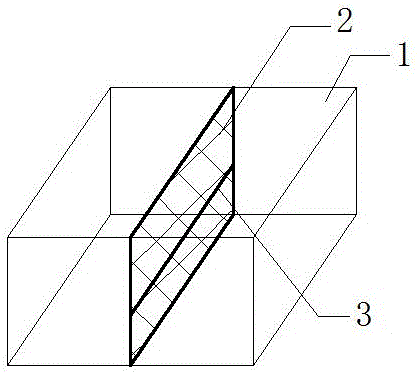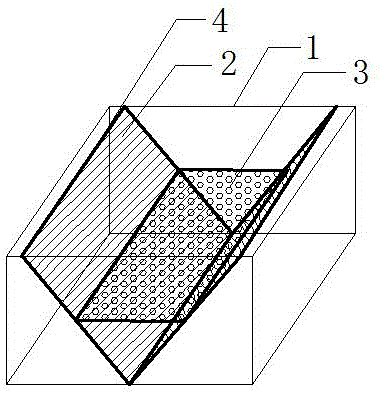Freshwater shrimp and tortoise polyculture method
A breeding method and turtle technology, applied in the field of agricultural breeding, can solve the problems of growth limitation, unregulated, easy mutual interference of fishing, etc., and achieve the effect of using pond space and improving economic benefits
- Summary
- Abstract
- Description
- Claims
- Application Information
AI Technical Summary
Problems solved by technology
Method used
Image
Examples
Embodiment 1
[0024] Such as Figure 1-2 As shown in , a certain breeding farm in Anhui is cultivated, and a pond of about 2 mu is selected. The width of the breeding pond is about 25 meters, and the length is about 53 meters. When the A-type net is in the open state, the span of the two sides of the top is 16m, and the distance between the adjacent sides is 1.5m. Three inverted A-type nets are set in the pond. The distance is 1m;
[0025] A culture method for mixed culture of freshwater shrimp and tortoise, the depth of the culture pond is 1.5m, several movable inverted A-shaped nets are arranged in the polyculture pond, and Sibin stone needles are installed in the closed part of the inverted A-shaped net structure;
[0026] (1) In mid-May, the initial state of the inverted A-type net was set in two overlapping nets in the vertical direction, and shrimp seedlings were put into the pond at a density of 50,000 tails / mu, and mixed granular bait A was fed;
[0027] The protein content of the...
PUM
| Property | Measurement | Unit |
|---|---|---|
| Body length | aaaaa | aaaaa |
| Weight | aaaaa | aaaaa |
Abstract
Description
Claims
Application Information
 Login to View More
Login to View More - R&D
- Intellectual Property
- Life Sciences
- Materials
- Tech Scout
- Unparalleled Data Quality
- Higher Quality Content
- 60% Fewer Hallucinations
Browse by: Latest US Patents, China's latest patents, Technical Efficacy Thesaurus, Application Domain, Technology Topic, Popular Technical Reports.
© 2025 PatSnap. All rights reserved.Legal|Privacy policy|Modern Slavery Act Transparency Statement|Sitemap|About US| Contact US: help@patsnap.com


